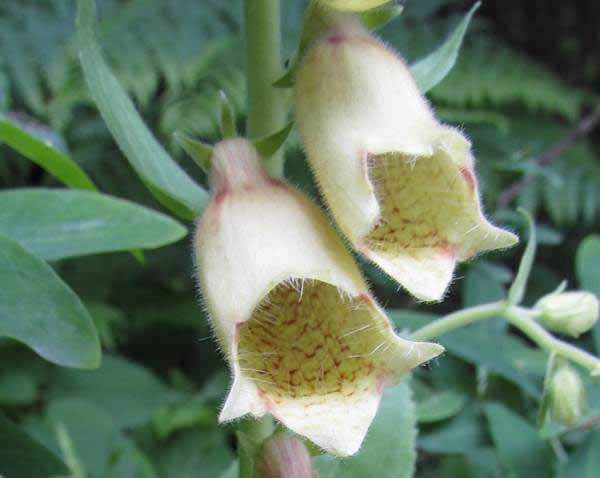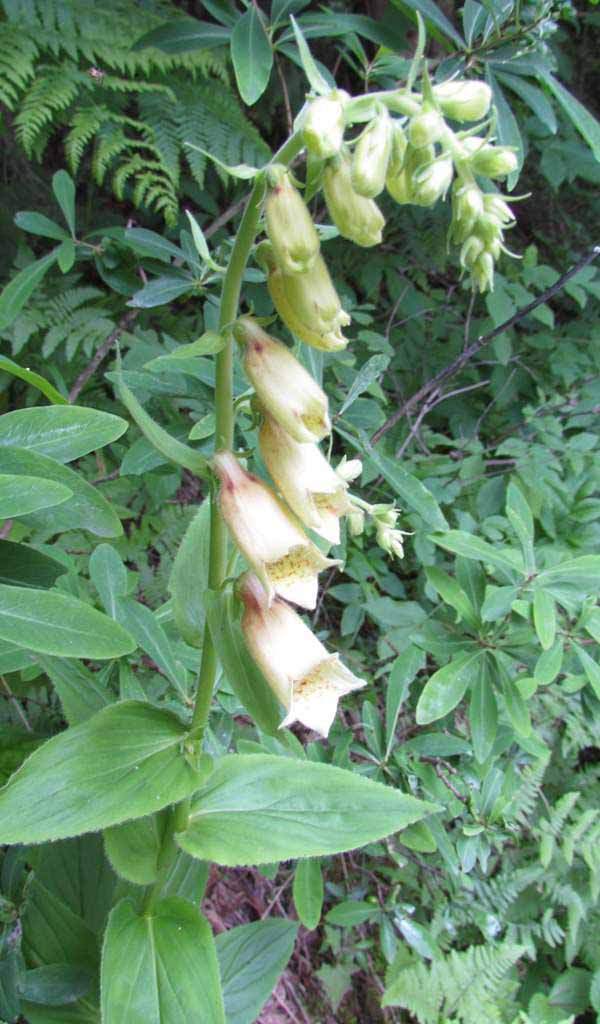Trees Birds Mammals Fish Amphibians Reptiles
Wild Algarve
Bookshop
Digitalis grandiflora - Large Yellow Foxglove
Phylum: Magnoliophyta - Class: Liliopsida - Order: Lamiales - Family: Plantaginaceae

Wherever soil is disturbed, particularly by forestry clear-felling, foxgloves are usually among the first wildflowers to reappear, invariably in dense swarms, and in this chracteristic Large Yellow Foxglove is no exception.

Description
Digitalis grandiflora grows to almost a metre in height and produces yellowish flowers that are pollinated by bees in summer. Its basal leaves can be seen throughout the year.
Distribution
These lovely biennial or short-lived perennial wildflowers are found in the wild throughout much of southern Europe and parts of Asia. This species has also been introduced to gardens in Britain and in many other parts of the world including North America.
Habitat
In the wild, Large Yellow Foxglove favours woodland edges, scrubby wasteland and dry stony land in mountainous regions.
Blooming Times
This sttely wildflower blooms from late June until early August, depending on altitude. The pictures of Large Yellow Foxglove plants shown on this page were taken in Slovenia in late June.
Toxicity
There are toxins in all kinds of foxgloves, and every part of this plant should be treated as poisonous
Etymology
The generic name Digitalis was given to this species and its close relatives by the famous Swedish naturalist Carl Linnaeus in his 1753 publication Species Plantarum; the name grandiflora also comes from Latin and means large-flowered.
The individual flowers of the Foxglove are indeed finger shaped, and they also fit very neatly onto human fingers like the fingers of a glove (or indeed like finger puppets); however, for people with sensitive skin it is important to be aware that just touching foxgloves can be enough to cause itching or even more seriously unpleasant skin irritations.
Similar Species
Digitalis lanata is found on mainland Europe but not in Britain; its flowers are cream with brownish veining.
Digitalis lutea, which is grown as a cultivar in Britain and Ireland, is a native wildflower in many parts of central Europe including Slovenia, Austria and Italy.
Sue Parker's latest ebook is a revised and enlarged edition of Wild Orchids in The Burren. Full details here...
Buy it for just £5.95 on Amazon...
Sue Parker's new ebook is a comprehensive and fully revised edition of her acclaimed field guide to the Wild Orchids of Wales. Full details here...
Buy it for just £5.95 on Amazon...
Please Help Us: If you have found this information interesting and useful, please consider helping to keep First Nature online by making a small donation towards the web hosting and internet costs.
Any donations over and above the essential running costs will help support the conservation work of Plantlife, the Rivers Trust and charitable botanic gardens - as do author royalties and publisher proceeds from books by Pat and Sue.